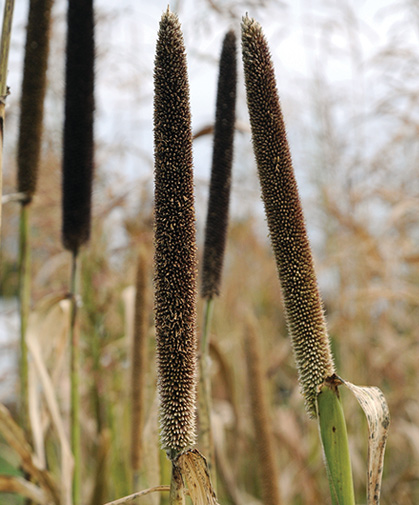Millet and Sudangrass - Key Growing Information

Culture: Pearl millet and sudangrass are warm season crops, so wait until the threat of frost has passed and the soil has warmed to 65–85° F (18–29° C) before planting. Sow ½-1" deep using a push seeder or grain drill. If broadcasting, seed at a higher rate and lightly harrow or press in with a cultipacker to ensure good germination. Millet and sudangrass can grow to heights up to 8', but periodic mowing can be used to keep height under control. Leave 4–6" of stubble with each mowing to encourage regrowth. Pearl Millet: Well adapted to growing areas characterized by drought, low soil fertility, and high temperatures. Because of its tolerance to difficult growing conditions, it can be grown in areas where other grain crops, such as corn or wheat, would not survive. Sudangrass: Decomposing sudangrass exudes a nematocidal acid which reduces nematode and symphylan populations. To avoid allelopathic effects or nitrogen tie-up in subsequent crops, ensure sufficient time for decomposition before sowing a small-seeded crop. This is best accomplished by allowing sudangrass to winterkill before planting the following spring.
Seeding Rate: Pearl Millet: ½–1 lb./1,000 sq.ft.; 12–25 lb./acre. Sudangrass: 1–2 lb./1,000 sq.ft.; 30–40 lb./acre.
Light/Soil Requirements: Pearl Millet: Full sun in well-drained soil. It performs well in soils with high salinity or low pH, but prefers a pH of 6.0. Sudangrass: Full sun. Performs best with good fertility but will grow in lower fertility soils. For maximum biomass, ensure sufficient nitrogen. Tolerates drought.
Height: 8'+
Harvest: Three to five cuttings per season are possible. Mow before incorporating into soil. 75–80 days to mature hay, 105 days to seed. Caution: Do NOT harvest sudangrass for forage after a frost as prussic acid levels may become toxic for livestock.
Termination: Due to their fast growth and substantial biomass, it is important to have appropriate equipment to properly manage these crops. Tractor-mounted flail, sickle bar, and rotary mowers will work, but smaller equipment may struggle. Millet and sudangrass will winterkill when exposed to frost, offering an alternative management option for growers without heavy equipment.

